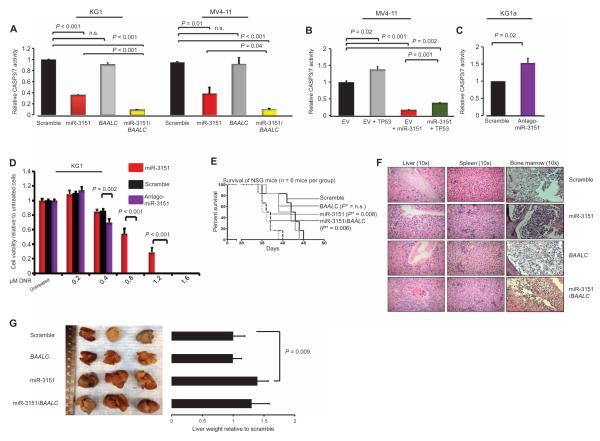Fig. 4. miR-3151 and miR-3151/BAALC inhibit apoptosis of AML cell lines, and increased miR-3151 results in increased leukemogenesis in vivo.
(A) Chemiluminescence assays of CASP3/7 in KG1 and MV4-11 cells after stable infection with miR-3151, BAALC, or scramble control (mean ± SD, n = 3 biological replicates; P values were determined using two-tailed Student’s t test). (B) Amount of CASP3/7 activity in MV4-11 cells stably expressing miR-3151 and transiently expressing TP53 or an empty vector (EV) control (mean ± SD, n = 3 biological replicates; P values were determined using two-tailed Student’s t test). (C) Caspase activity in KG1a cells in response to stable infection with antagomiR-3151 (mean ± SD, n = 3 biological replicates; P values were determined using two-tailed Student’s t test). (D) Cell viability of KG1a cells stably expressing miR-3151, antagomiR-3151, or scramble as determined by MTS assays 72 hours after exposure to the indicated doses of daunorubicin (DNR; n = 3 biological replicates; P values were determined using two-tailed Student’s t test). (E) Survival of NSG mice after injection of MV4-11 cells stably overexpressing miR-3151, BAALC, miR-3151/BAALC, or scramble control (n = 6 mice per group). Statistical significance in survival was determined by log-rank test. *P value depicts comparison with scramble. (F) Representative pictures of hematoxylin and eosin staining of livers, spleens, and bone marrows of the mice. All organs showed infiltration with leukemic blasts. The hepatic blast infiltration was especially pronounced in the miR-3151 and miR-3151/BAALC mice and was predominantly seen around the blood vessels. (G) Representative images of the macroscopic appearance of livers collected postmortem from NSG mice. The bar graphs show the corresponding liver weights (in grams, n = 6 organs) relative to scramble control. P values were determined using two-tailed Student’s t test.

